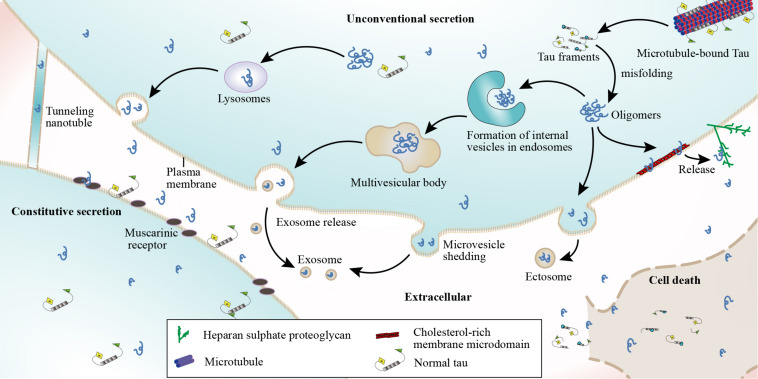FIGURE 3.
Tau protein secretion and release. The possible mechanisms underlying the presence of tau in the extracellular space include cell death, neuroactive stimulation, constitutive secretion, and unconventional secretion. A small amount of tau can be released into the extracellular space in free form or by penetrating adjacent membranes, which can be achieved by stimulating neuroactivity or constitutive secretion. However, the methods involved in unconventional tau protein secretion include (1) non-vesicular direct translocation across the plasma membrane from the cytoplasm and extracellular trapping via HSPGs, (2) release via secretory lysosomes that fuse with the plasma membrane and release their contents into the extracellular space, (3) microvesicle shedding from the plasma membrane, and (4) vesicle-mediated exosome release. Tau can also be secreted by both neuronal and non-neuronal cells when tau protein is exogenously expressed, while extracellular tau can bind muscarinic (M1, M3) receptors. Tau may also be released through nanotubes that connect the cytoplasmic compartments of adjoining cells.

